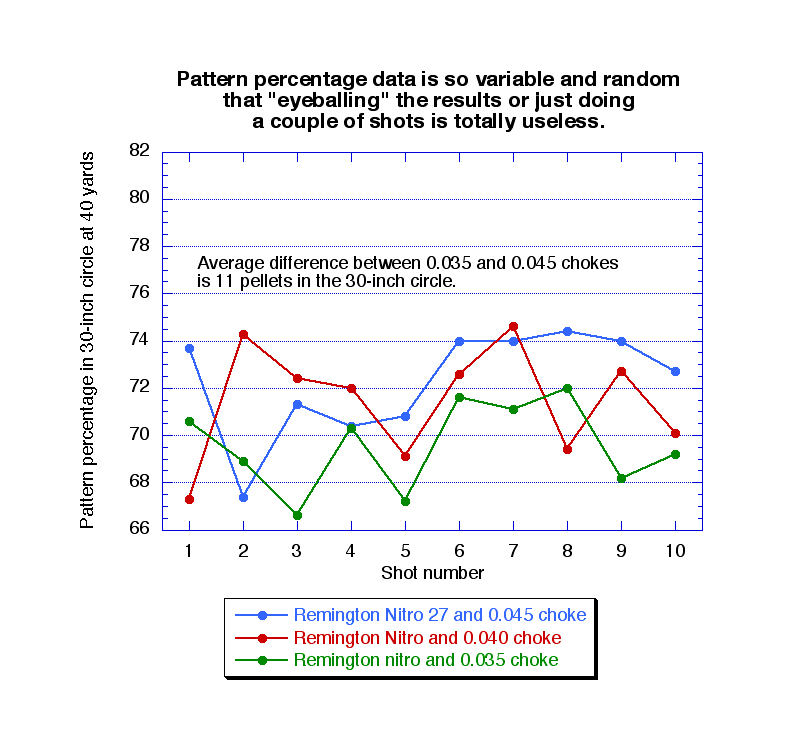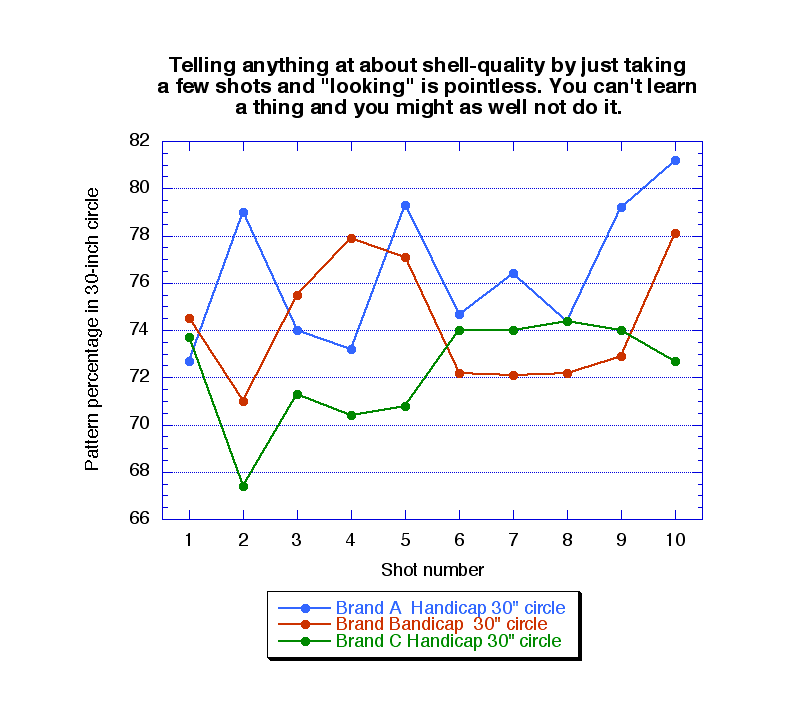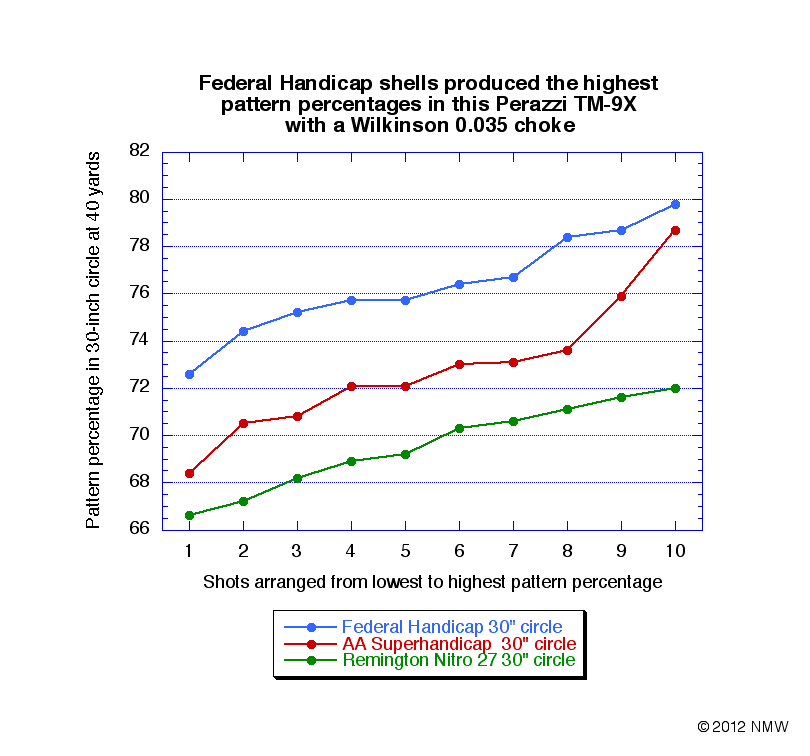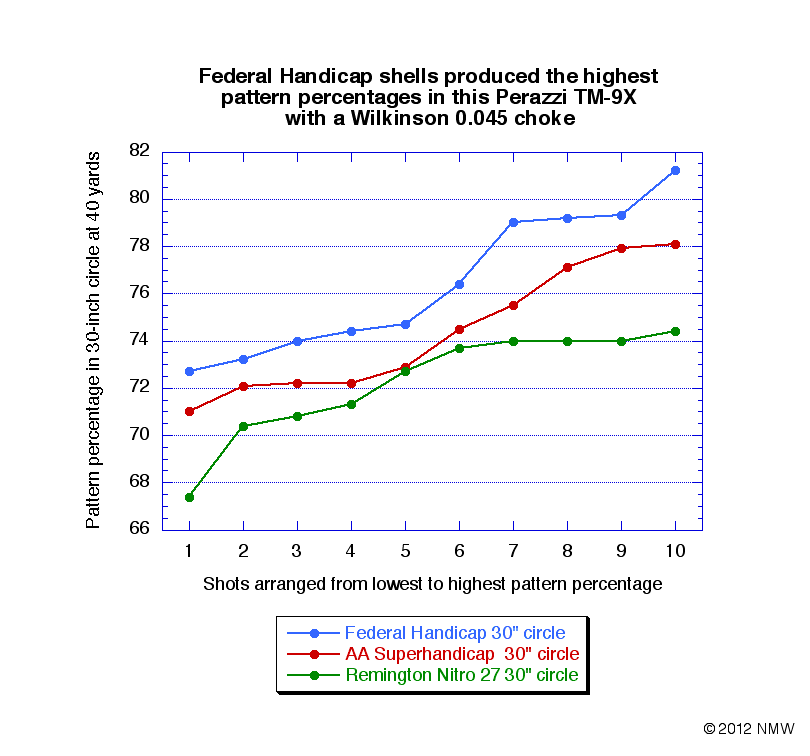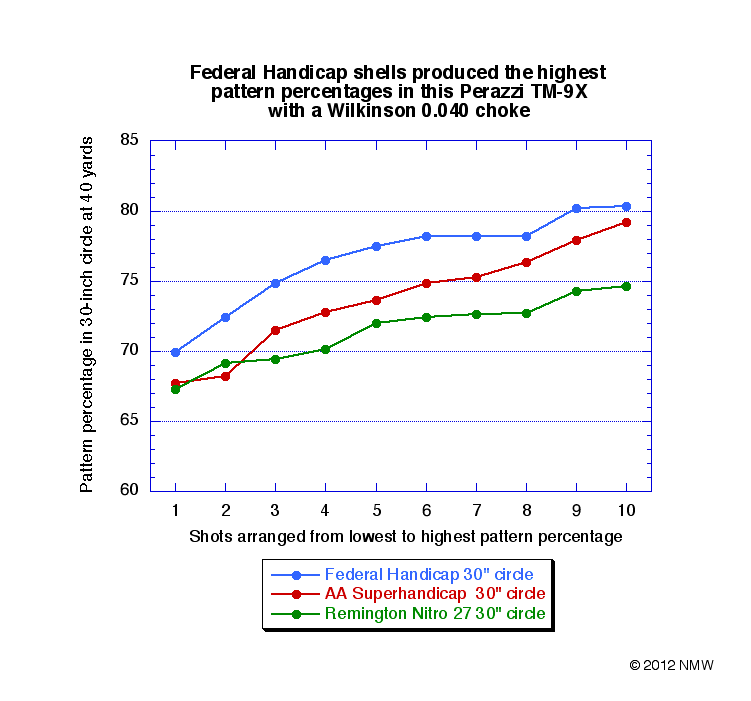An earlier poster wrote, in part:
"
Patterning chokes does depend on the cartridge used so if you used brand X and someone uses brand Y the results could be very different."
and this is certainly true. But, if you and "someone" were to get contrasting results, what would be the likely cause of that difference? Here are three theories:
1. The differences in performance between two gun/shell combinations, shooting similar chokes but different shells are likely to be more ascribable to the gun (or choke tube or magical boring or reputation or selling price or whatever) more than to the shells.
2. The differences in performance between two gun/shell combinations, shooting similar chokes but different shells are likely to be more ascribable to the shells than to the gun.
3. That old canard, attributed in the US to barrelsmith Stan Baker, "Every gun is law unto itself" and there's no way to make sense of any of this anyway.
Let's look at an experiment which addresses the three accounts above. The experimental question is whether two guns, with the same choke (0.040") and shooting the same array of cartridges, will produce similar patterns and if so, will they put the different cartridges in the same order, that is, will the best and worse ones in Gun A still be the best and worse ones in Gun B?
Consider three outcomes:
Outcome 1. The patterns produced by the two guns are different in pattern percentage and other respects but the basic order among the shells is similar. Proposed explanation: The differences found primarily are due to the guns.
Outcome 2. The patterns produced by the two guns are similar in pattern percentage and other respects and the basic order among the shells is similar . Proposed explanation: Pattern percentage differences found among the shells primarily are due to the shells.
Outcome 3. The patterns produced by the two guns are different in pattern percentage and other respects and order among the shells is different as well. Proposed explanation: Guns and the way they interact with particular shotgun shells, working together, really are a law unto themselves, defy predictions regarding their paired performance, and actually must be tested as a unit to ever know what you are getting.
Every year I buy examples of all the available brands of similar shells, heavy 7 1/2's for example, at the Grand American at Sparta, IL in the USA. Here's a result from the 2011 Grand.
First, some will wonder why I go to all the work (actually, the program Shotgun Insight does the hard work, I just run it, though shooting all the patterns required and counting the holes is far from a trivial task). Here's the result of testing three choke-constrictions
and here's three shell brands:
You not only have to count the pellet-holes but also organize the data in some aspect to understand what you have discovered. Here's a result of three shell-brands and a single choke:
And here are two more, tighter chokes:
And here's the gun with three chokes, one shell:
This result calls into question the common belief cited above, "Every gun is law unto itself." This gun, shooting chokes that vary by as much as 0.010". shoots a single brand of shell the same. It also underlines the fact the once you get to full, extra-full, or super-full constrictions, there is little or no difference between their performances within a single brand of choke tube.
Let's move on to a different gun shooting the same array of shells. In this case, it's a Remington 1100 with a 0.040 choke. While the first gun was a high-cost and admired brand with the currently-deregueur 0.040" bore and a similarly-vaunted customization history, the old Remington sported an untouched 0.725" bore which was probably bought at a gun show for under $100 leading to a $400 econo-trapgun.
Here's how it patterned the same shells, Fiocci's were added to this test but may be ignored.
And now let's change the y-axis on an earlier graph to make them easier to compere:
The fact that these to very different gun responded to the three brands of shells in the same way leads us to accept Outcome 2 as a summary of what happened in this experiment.
Outcome 2. The patterns produced by the two guns are similar in pattern percentage and other respects and the basic order among the shells is similar . Proposed explanation: Pattern percentage differences found among the shells primarily are due to the shells.
This is the overwhelmingly common outcome in tests like this. Guns are not at all "a law unto themselves;" guns and chokes and bores and so on with similar choke-restrictions perform in similar ways (unless there is something wrong with them). The performance of shotguns is far more similar & consistent , and lawful, than most shooters have been led to believe, read in the shotgun press and books, and are told at the club & on line. The problem is, it's a lot of work to find that out and you can't pay the bills with observations like that in the shotgun press.
Thank you for your attention,
Jezek
Note: another set of experiments with the same outcomes but a different experimental question is described on this report:
http://www.claytargettesting.com/Bore_Diameter/Bore_Diameter.pdf











































